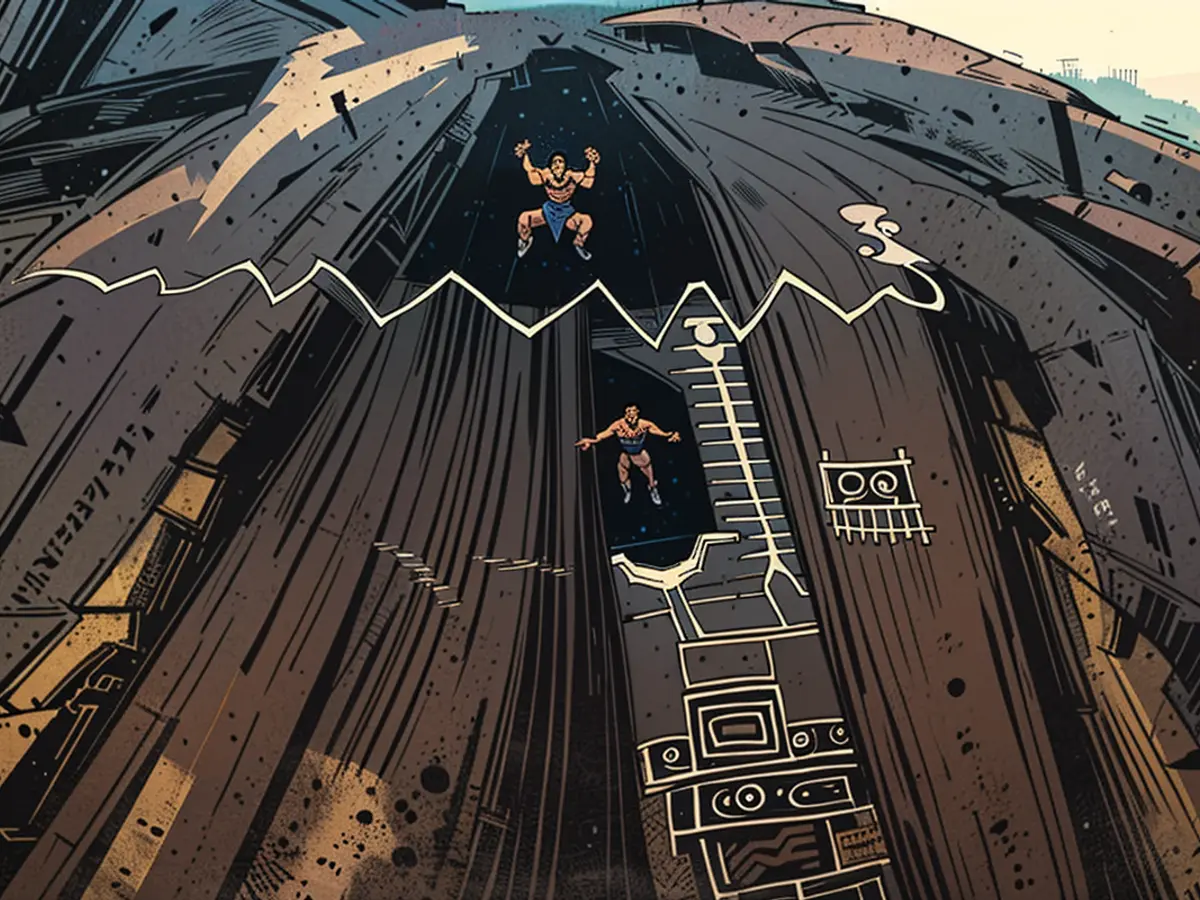Digging into the Past: Exploring Archaeological Sites - Large-scale rock etchings, potentially the biggest found, discovered.
In the South American continent, immense prehistoric rock etchings have been unearthed. These engravings, carved onto the cliffs along the Upper and Middle Orinoco River in Venezuela and Colombia, measure several dozen meters in length; the biggest one even stretches over 40 meters, as asserted by a research team from the University of Bournemouth, University College London (both in England), and the Universidad de los Andes (in Colombia) in the Antiquity journal.
The discovery comprises a towering depiction of a massive serpent, the largest individual rock engraving ever documented. Iconic symbols from this prehistoric era - commonly known as petroglyphs - also depict human figures and immense Amazonian centipedes.
Lead author Philip Riris, an archaeological environmental modeling lecturer at the University of Bournemouth, expressed his awe, stating, "These monumental structures are really imposing, and we believe they were made to be observed from afar."
The prehistoric inhabitants might have utilized these engravings to identify their territory and establish specific expectations regarding behavior at these sites, mused Riris. Though some of these engravings were previously discovered, they may date as far back as 2,000 years ago. Evidence of similar motifs on local pottery indicates the markings could be even older.
Riris surmised that the snake-inspired carvings might convey a warning to onlookers to act respectfully near these sites. "Snakes are typically seen as quite menacing, so the placement of these carvings may signify a signal of appropriate conduct," he postulated.
These engravings predominantly surface along a segment of the Orinoco River: a significant prehistoric trade and travel passageway. José Oliver, an archaeologist from the UCL Institute of Archaeology, reiterated, "This makes it a crucial landing point and, for that reason, even more significant to signal its local identity and inform visitors that someone resides there."
Read also:
- Despite the ongoing excavations in South America, the archaeological finds in Venezuela and Colombia continue to astound experts, such as those from Bournemouth University and University College London in England.
- In light of the discovery of these ancient engravings in Colombia, many students at Bournemouth University and University College London are now exploring the possibility of studying archaeology in South America, inspired by the country's rich history.
- Additionally, researchers from Venezuela's Universidad Central de Venezuela and Bogotá's University of the Andes are also collaborating on this project, bringing forth diverse perspectives on the region's prehistoric past.
- As the study of these petroglyphs progresses, scientists from University College London's Institute of Archaeology are looking at the potential significance of the Orinoco River as a significant cultural and trade hub during ancient times.
- Meanwhile, academics in Caracas and other Venezuelan cities are considering the potential impact of climate change on these archaeological sites, aiming to preserve these invaluable pieces of history for future generations.
- Furthermore, the scientific community in Europe and Latin America is pooling resources, with Bournemouth University and University College London leading the way, to conduct more advanced research on these rock engravings and their relationship to the early civilizations in South America.






